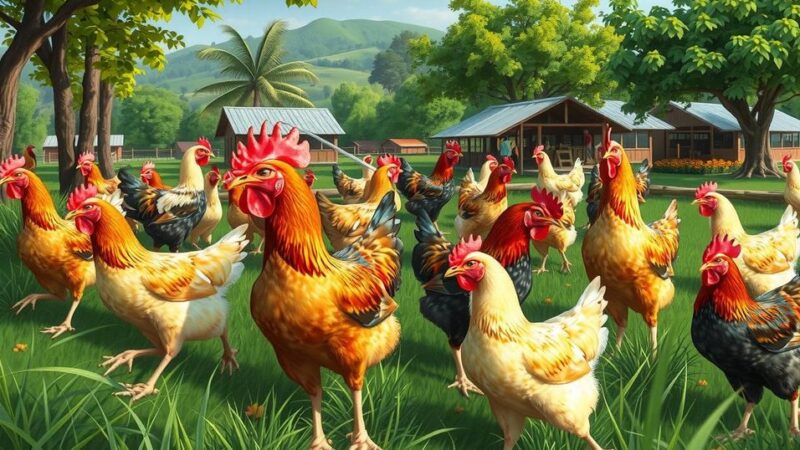Nigeria’s food inflation declined to 23.51% in February 2025 from 37.92% in 2024, as reported by the NBS. Month-on-month inflation was 1.67%, indicating slower price rises. Key staples like yam, potatoes, and soybeans experienced even less price pressure. However, food prices still contribute substantially to overall inflation, with significant regional variations evident across the country.
In February 2025, Nigeria’s food inflation rate decreased to 23.51%, a significant drop from the 37.92% recorded in February 2024, as per the Consumer Price Index (CPI) report published by the National Bureau of Statistics (NBS). Despite this decline both month-on-month and year-on-year, food prices continue to rise, albeit at a slower rate.
The NBS report attributes this notable decline in food inflation partly to a change in the base year used for measurement. Month-on-month, the food inflation rate was 1.67%, indicating a slower increase in food prices compared to January 2025. This suggests an easing in the pressure influencing food costs, though prices are still ascending.
Several key food items, including yam tubers, potatoes, soybeans, maize flour, cassava, and dried bambara beans, have seen decreased price increases, reflecting possible improvements in supply chains and reduced exchange rate pressure. The report states, “The Food inflation rate in February 2025 was 23.51% on a year-on-year basis. This was 14.41% lower compared to the rate recorded in February 2024 (37.92%).”
Despite the easing food inflation, it remains a significant factor in overall inflation rates, comprising 9.28% of the total headline inflation in Nigeria, with month-on-month contributions of 0.82%. This continued rise in food costs indicates persistent inflationary pressures, even as rate increases slow.
The report notes regional disparities in food inflation across Nigeria. Sokoto recorded the highest rate at 38.34%, followed by Edo at 35.08% and Nasarawa at 33.53%, largely due to supply chain disruptions and increased transportation costs. In contrast, lower inflation rates in Adamawa (12.18%), Ondo (13.66%), and Oyo (15.55%) suggest better local production and stability in food supplies.
Month-on-month trends show that Sokoto experienced the steepest price increase at 18.83%, with Nasarawa at 15.32% and Kogi at 11.65%. Meanwhile, regions like Ondo, Kaduna, and Oyo recorded declines, reflecting localized improvements in food supply or effective policy measures.
In conclusion, Nigeria’s food inflation rate has shown a significant decrease to 23.51% in February 2025, compared to the previous year. Key staples are experiencing slower price increases suggesting improved supply conditions. However, food prices still contribute significantly to overall inflation, with large regional variances observed throughout the country. Continuous monitoring and potential policy interventions may further stabilize food costs in the future.
Original Source: nairametrics.com






